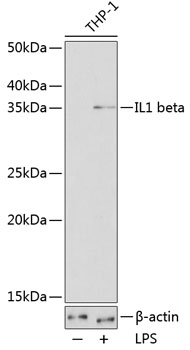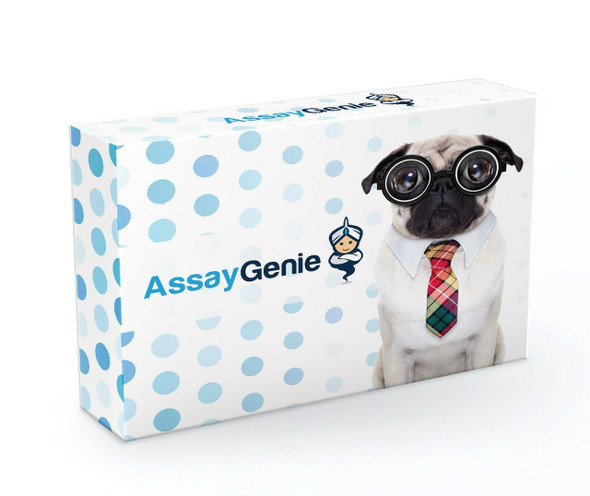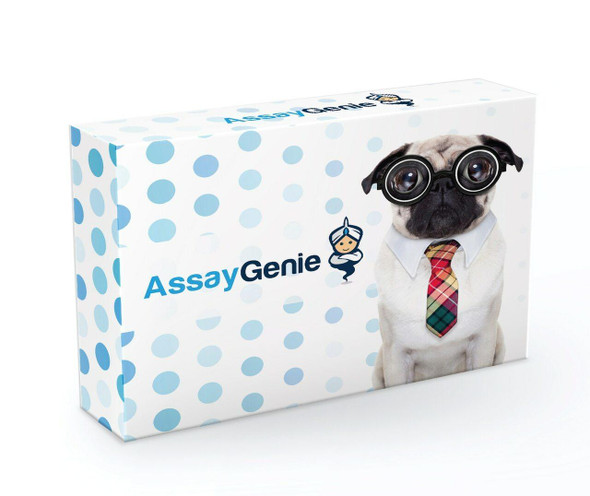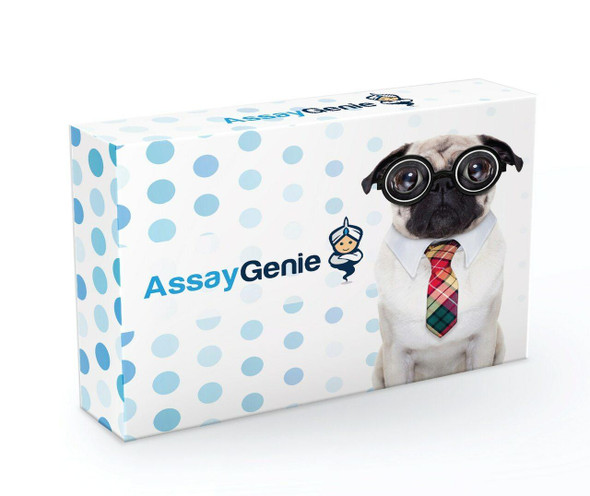Anti-IL-1 beta Antibody (CAB19635)
- SKU:
- CAB19635
- Product Type:
- Antibody
- Reactivity:
- Human
- Host Species:
- Rabbit
- Isotype:
- IgG
- Research Area:
- Immunology
Description
Anti-IL-1 beta Antibody (CAB19635)
The IL-1 Beta Rabbit Monoclonal Antibody (CAB19635) is a valuable tool for researchers studying IL-1 Beta, a key player in the inflammatory response. This antibody, developed using rabbit monoclonal technology, is highly specific to IL-1 Beta and has been validated for use in various applications, including immunohistochemistry and ELISA.IL-1 Beta is a cytokine that plays a crucial role in the regulation of immune responses and inflammation. Dysregulation of IL-1 Beta has been implicated in various diseases, including autoinflammatory disorders, autoimmune diseases, and cancer.
By targeting IL-1 Beta with this high-quality antibody, researchers can gain insights into its function and potential therapeutic implications.The IL-1 Beta Rabbit Monoclonal Antibody (CAB19635) offers researchers a reliable and sensitive tool for studying the role of IL-1 Beta in health and disease. Whether investigating the mechanisms of inflammation or exploring new therapeutic strategies, this antibody is an essential component of any research arsenal focused on immune regulation and inflammatory pathways.
| Antibody Name: | Anti-IL-1 beta Antibody |
| Antibody SKU: | CAB19635 |
| Antibody Size: | 20uL, 50uL, 100uL |
| Application: | WB IF |
| Reactivity: | Human |
| Host Species: | Rabbit |
| Immunogen: | A synthesized peptide derived from human IL1 beta. |
| Application: | WB IF |
| Recommended Dilution: | WB 1:500 - 1:2000 IF 1:50 - 1:200 |
| Reactivity: | Human |
| Positive Samples: | THP-1 |
| Immunogen: | A synthesized peptide derived from human IL1 beta. |
| Purification Method: | Affinity purification |
| Storage Buffer: | Store at -20°C. Avoid freeze / thaw cycles. Buffer: PBS with 0.02% sodium azide, 0.05% BSA, 50% glycerol, pH7.3. |
| Isotype: | IgG |
| Sequence: | Email for sequence |
| Gene ID: | 3553 |
| Uniprot: | P01584 |
| Cellular Location: | |
| Calculated MW: | 17kDa |
| Observed MW: | 35KDa |
| Synonyms: | IL-1, IL1-BETA, IL1F2, IL1 beta, IL1B |
| Background: | The protein encoded by this gene is a member of the interleukin 1 cytokine family. This cytokine is produced by activated macrophages as a proprotein, which is proteolytically processed to its active form by caspase 1 (CASP1/ICE). This cytokine is an important mediator of the inflammatory response, and is involved in a variety of cellular activities, including cell proliferation, differentiation, and apoptosis. The induction of cyclooxygenase-2 (PTGS2/COX2) by this cytokine in the central nervous system (CNS) is found to contribute to inflammatory pain hypersensitivity. This gene and eight other interleukin 1 family genes form a cytokine gene cluster on chromosome 2. [provided by RefSeq, Jul 2008] |
| UniProt Protein Function: | IL1B: Produced by activated macrophages, IL-1 stimulates thymocyte proliferation by inducing IL-2 release, B-cell maturation and proliferation, and fibroblast growth factor activity. IL-1 proteins are involved in the inflammatory response, being identified as endogenous pyrogens, and are reported to stimulate the release of prostaglandin and collagenase from synovial cells. Monomer. Belongs to the IL-1 family. |
| UniProt Protein Details: | Protein type:Cytokine Chromosomal Location of Human Ortholog: 2q14 Cellular Component: extracellular space; extracellular region; cytosol; secretory granule Molecular Function:protein domain specific binding; interleukin-1 receptor binding; cytokine activity Biological Process: positive regulation of granulocyte macrophage colony-stimulating factor production; negative regulation of MAP kinase activity; positive regulation of nitric oxide biosynthetic process; activation of MAPK activity; positive regulation of transcription, DNA-dependent; positive regulation of interleukin-2 biosynthetic process; germ cell programmed cell death; negative regulation of insulin receptor signaling pathway; positive regulation of lipid catabolic process; positive regulation of NF-kappaB import into nucleus; fever; positive regulation of membrane protein ectodomain proteolysis; response to carbohydrate stimulus; activation of NF-kappaB transcription factor; cell-cell signaling; positive regulation of phagocytosis; positive regulation of T cell mediated immunity; positive regulation of T cell proliferation; neutrophil chemotaxis; positive regulation of I-kappaB kinase/NF-kappaB cascade; positive regulation of heterotypic cell-cell adhesion; positive regulation of mitosis; smooth muscle adaptation; interleukin-1 beta production; positive regulation of interleukin-6 production; positive regulation of angiogenesis; positive regulation of transcription from RNA polymerase II promoter; positive regulation of transcription factor activity; negative regulation of lipid metabolic process; sequestering of triacylglycerol; positive regulation of histone phosphorylation; apoptosis; positive regulation of interleukin-6 biosynthetic process; positive regulation of JNK cascade; signal transduction; positive regulation of vascular endothelial growth factor receptor signaling pathway; positive regulation of protein export from nucleus; positive regulation of interleukin-8 production; negative regulation of cell proliferation; negative regulation of lipid catabolic process; hyaluronan biosynthetic process; protein kinase B signaling cascade; lipopolysaccharide-mediated signaling pathway; inflammatory response; regulation of I-kappaB kinase/NF-kappaB cascade; cytokine and chemokine mediated signaling pathway; MAPKKK cascade; response to ATP; positive regulation of interferon-gamma production; positive regulation of chemokine biosynthetic process; positive regulation of prostaglandin secretion; positive regulation of fever; positive regulation of histone acetylation; immune response; positive regulation of protein amino acid phosphorylation; regulation of insulin secretion; embryo implantation Disease: Gastric Cancer, Hereditary Diffuse |
| NCBI Summary: | The protein encoded by this gene is a member of the interleukin 1 cytokine family. This cytokine is produced by activated macrophages as a proprotein, which is proteolytically processed to its active form by caspase 1 (CASP1/ICE). This cytokine is an important mediator of the inflammatory response, and is involved in a variety of cellular activities, including cell proliferation, differentiation, and apoptosis. The induction of cyclooxygenase-2 (PTGS2/COX2) by this cytokine in the central nervous system (CNS) is found to contribute to inflammatory pain hypersensitivity. This gene and eight other interleukin 1 family genes form a cytokine gene cluster on chromosome 2. [provided by RefSeq, Jul 2008] |
| UniProt Code: | P01584 |
| NCBI GenInfo Identifier: | 62906858 |
| NCBI Gene ID: | 3553 |
| NCBI Accession: | P01584.2 |
| UniProt Secondary Accession: | P01584,Q53X59, Q53XX2, Q7M4S7, Q7RU01, Q96HE5, Q9UCT6 |
| UniProt Related Accession: | P01584 |
| Molecular Weight: | 30,748 Da |
| NCBI Full Name: | Interleukin-1 beta |
| NCBI Synonym Full Names: | interleukin 1, beta |
| NCBI Official Symbol: | IL1B |
| NCBI Official Synonym Symbols: | IL-1; IL1F2; IL1-BETA |
| NCBI Protein Information: | interleukin-1 beta; IL-1 beta; catabolin; preinterleukin 1 beta; pro-interleukin-1-beta |
| UniProt Protein Name: | Interleukin-1 beta |
| UniProt Synonym Protein Names: | Catabolin |
| Protein Family: | Interleukin |
| UniProt Gene Name: | IL1B |
| UniProt Entry Name: | IL1B_HUMAN |











